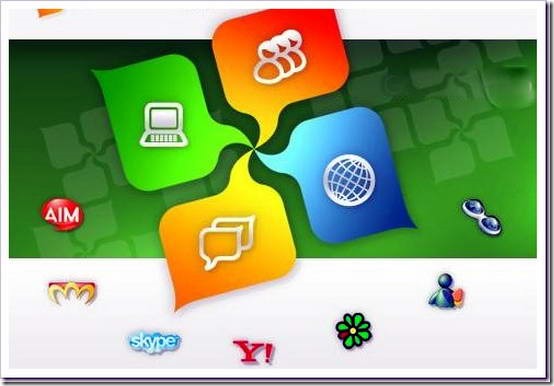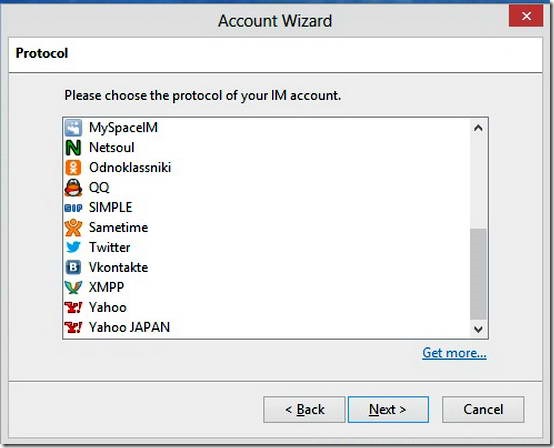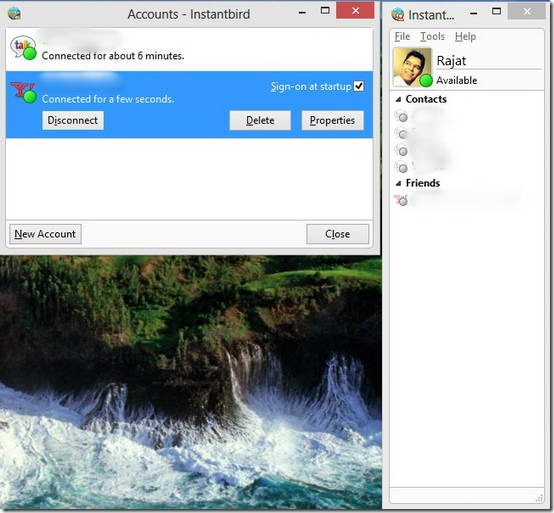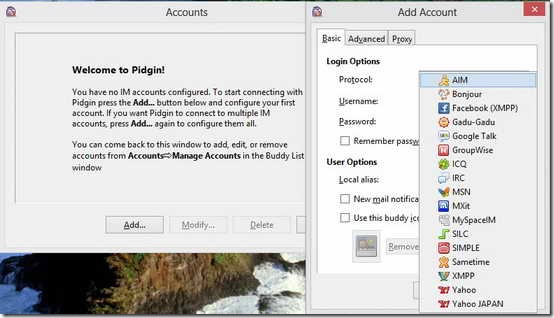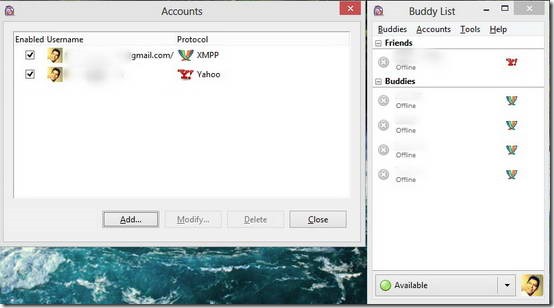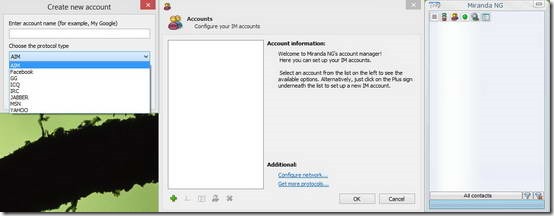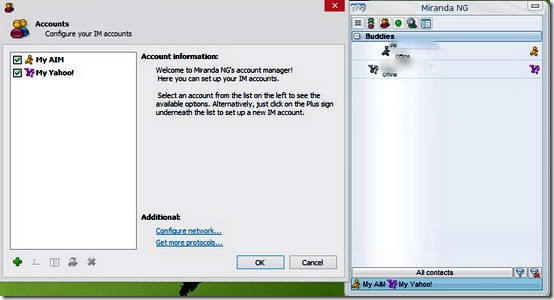There’s a hindrance that still remains as far as IM concerned. Different IM services like Talk, Y! Messenger etc. use different and (somewhat) incompatible protocols. Which means that if half of your friends are on GTalk and half on Y! Messenger, you have to install two different IM clients to stay in touch with them. This problem escalates when your friends are dispersed over a wider array of social networks, thus increasing the number of incompatible protocols. So how to overcome this problem? Say Hello to Multiprotocol IM Clients.
What is a (Multiprotocol) IM Client?
Put simply, an Instant Messaging (IM) client is a piece of software that lets you chat with other users that are in your “buddy list”, or persons who are in your contacts list on the same IM service. And along the same lines, we can define Multiprotocol IM client as a piece of software that allows you to simultaneously login and chat to your online “friends” or “buddies” through a unified interface. This essentially means that if you have half of your friends on Gtalk, a quarter on Y! messenger, and the rest on Outlook/Skype, then instead of installing three different chat clients, you can just install one and start chatting!! Sounds fun, isn’t it??
Three very good Multiprotocol IM Clients
Although there exist a handful of multiprotocol IM clients, I will be detailing the three that I consider lightweight and suited to most users. I might (most probably will) follow up this article with another one to review the others that exist, beside these three.
Instantbird
Instantbird is a free and open source Multiprotocol IM Client built over the Mozilla rendering engine (you’ll immediately notice the similarities in the options). It supports a vast array of protocols including, but not limited to Yahoo!, MSN, Facebook chat, MySpace chat, Twitter (yeah, you can tweet through it too!!) etc. Installation is straight forward. The first screen shows you a wizard that allows you to select a service, then add your account with that service. After you’re authorized, your Buddy list is downloaded and appears in the main window. Friends can be grouped into categories based on protocols (Yahoo! buddies, FB buddies etc.).
Welcome wizard showing list of supported protocols in Instantbird:
Main Window showing list of friends and accounts window showing a Gtalk and a Yahoo! account logged in simultaneously.
Read detailed review here or download it here.
Pidgin
Pidgin is a widely acclaimed Multiprotocol IM client that also supports a wide array of services. What separates Pidgin from the rest is the fact that you can add a ton of features to it by installing free plugins available on its website. On the surface, it looks like a regular multiprotocol IM. But once you go to the options, you are presented with a myriad array of stuff that you can go on tweaking about. Although for most users, the default settings will suffice just good. Pidgin also supports file transfer for a select number of protocols (ex. Yahoo! messenger). Like Instantbird, Pidgin is also cross platform and works on every operating system except OSX.
A combinatorial screenshot showing Pidgin’s Welcome Wizard and the different protocols supported by it. Adding a service is as simple as selecting it, and entering your authentication details (username and password)
Another screenshot showing the list of friends (with respective protocol/service icons on the right) and the accounts window, showing a Gmail account (based on XMPP) and a Yahoo! account logged in simultaneously.
Read more about Pidgin here, or get it here.
Miranda
Miranda holds the distinction of being the most bare bones Multiprotocol IM amongst the entries in this article. Free and Open source, its interface still resembles something like it was coded years ago and then abandoned. But don’t be fooled by its modest looks. Miranda is a powerhouse whose true power lies in a wide array of plugins of all sorts, developed and maintained by an active community. Ironically, even though its main interface is the most stripped down, its options menu is a total labyrinth. Worse, it also supports a lesser number of protocols out of the box (Though few plugins off the site should change that). For this reason, personally I wouldn’t suggest it over the other two options discussed in the article, though you guys are more than welcome to play around. I just find it a bit clunky for my liking.
Combinatorial screenshot showing Miranda’s Supported protocols, The “add accounts screen” and the main window for displaying friends’ list.
Another screenshot showing the friends’ listing in the main UI, and two accounts (AoL and Yahoo!) logged in at the same time.
Conclusion
Multiprotocol IM Clients are nifty little pieces of software. They ease the way we communicate or crudely, chat with our friends in real time, a lot. The fact that they eliminate the need to install multiple redundant IM clients alone is reason enough to use them. Some of them are really simple and bare bones, while others can be configured to almost no end with a seemingly endless supply of plugins.
I’ll most probably be covering a few more Multi-Protocol IM clients, some time later. Till then, you guys give these three bad boys a spin, and tell me how do you like them. Do you guys find them nice and easy to use, or they’re just too full of seemingly endless options (I know Miranda for sure would elicit that reaction)? Do let me know your thoughts in the comments below.
